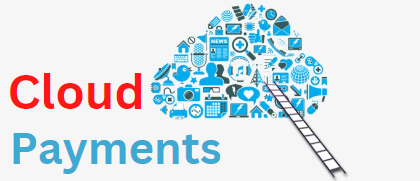How Cloud Payments Are Transforming E-commerce
In recent years, the world of e-commerce has witnessed a significant transformation with the rise of cloud payments. As technology continues to evolve, businesses are constantly seeking innovative ways to streamline their operations and enhance customer experience. Cloud payments have emerged as a game-changer in the e-commerce industry, revolutionizing the way transactions are conducted online. This article will delve into the various aspects of cloud payments and explore how they are transforming e-commerce.
Understanding Cloud Payments: What Are They and How Do They Work?
Cloud payments, also known as cloud-based payments or cloud commerce, refer to the process of conducting financial transactions over the internet using cloud computing technology. Unlike traditional payment methods that rely on physical infrastructure, cloud payments leverage the power of the internet and cloud-based platforms to facilitate secure and efficient transactions.
At its core, cloud payments involve the storage and processing of payment data in the cloud, eliminating the need for businesses to handle sensitive customer information directly. Instead, this data is securely stored in remote servers, accessible only to authorized parties. When a customer makes a purchase, their payment information is encrypted and transmitted to the cloud, where it is processed and verified. Once the transaction is complete, the necessary funds are transferred, and both the customer and the merchant receive confirmation of the payment.
Advantages of Cloud Payments for E-commerce Businesses
The adoption of cloud payments offers numerous advantages for e-commerce businesses, making it a preferred choice for many industry players. One of the key benefits is enhanced security and fraud prevention measures. By leveraging the expertise and infrastructure of cloud payment providers, businesses can significantly reduce the risk of data breaches and fraudulent activities. Cloud payment solutions employ advanced encryption techniques and robust security protocols to safeguard sensitive customer information, providing peace of mind for both businesses and consumers.
Another advantage of cloud payments is the streamlined checkout process it offers. Traditional payment methods often involve multiple steps and redirects, leading to a cumbersome and time-consuming experience for customers. Cloud payment solutions, on the other hand, provide a seamless and integrated checkout process, allowing customers to complete their transactions quickly and effortlessly. This not only improves user experience but also increases conversion rates for businesses.
Integration and Compatibility: Cloud Payment Solutions for Various E-commerce Platforms
One of the key factors contributing to the popularity of cloud payments is its compatibility with various e-commerce platforms. Whether businesses operate on popular platforms like Shopify, WooCommerce, or Magento, or have custom-built websites, cloud payment solutions can seamlessly integrate with these platforms, providing a unified payment experience for customers.
Cloud payment providers offer a wide range of integration options, including APIs (Application Programming Interfaces) and plugins, allowing businesses to connect their e-commerce platforms with the payment solution effortlessly. This compatibility ensures that businesses can leverage the benefits of cloud payments without the need for extensive technical expertise or costly development efforts.
The Role of Artificial Intelligence and Machine Learning in Cloud Payments
Artificial Intelligence (AI) and Machine Learning (ML) have become integral components of cloud payment solutions, further enhancing their capabilities and effectiveness. AI and ML algorithms can analyze vast amounts of data in real-time, enabling businesses to detect and prevent fraudulent activities more efficiently. By continuously learning from patterns and anomalies, these technologies can identify suspicious transactions and trigger alerts, minimizing the risk of financial losses.
Moreover, AI and ML algorithms can also provide valuable insights into customer behavior and preferences. By analyzing transaction data, businesses can gain a deeper understanding of their customers, enabling them to personalize their offerings and marketing strategies. This not only improves customer satisfaction but also increases customer loyalty and retention.
Enhanced Security and Fraud Prevention Measures in Cloud Payments
When it comes to online transactions, security is of paramount importance. Cloud payment solutions address this concern by implementing robust security measures to protect sensitive payment data. These solutions employ encryption techniques, tokenization, and secure data transmission protocols to ensure that customer information remains secure throughout the payment process.
Encryption plays a crucial role in cloud payments, as it converts sensitive data into an unreadable format, making it virtually impossible for unauthorized individuals to access or decipher the information. Additionally, tokenization replaces sensitive data with unique tokens, further reducing the risk of data breaches. These security measures, combined with regular security audits and compliance with industry standards, provide businesses and customers with a high level of confidence in the security of cloud payments.
Streamlining the Checkout Process: How Cloud Payments Improve User Experience
The checkout process is a critical stage in the customer journey, and any friction or inconvenience can lead to cart abandonment and lost sales. Cloud payment solutions address this challenge by streamlining the checkout process, making it quick, convenient, and user-friendly.
With cloud payments, customers can complete their transactions without being redirected to external payment gateways or having to enter their payment information repeatedly. By storing customer data securely in the cloud, businesses can offer one-click or saved payment options, allowing customers to make purchases with just a few clicks. This simplicity and convenience not only enhance the user experience but also encourage repeat purchases and customer loyalty.
Challenges and Considerations in Adopting Cloud Payments
While cloud payments offer numerous benefits, businesses must also be aware of the challenges and considerations associated with their adoption. One of the primary concerns is data security. Businesses must ensure that their chosen cloud payment provider adheres to strict security standards and compliance regulations. Additionally, businesses should implement robust internal security measures to protect customer data.
Another consideration is the potential for downtime or technical issues. As cloud payments rely on internet connectivity and remote servers, businesses must have contingency plans in place to handle any disruptions. This may involve having backup systems or alternative payment methods available to minimize the impact on customers.
Common Concerns and FAQs about Cloud Payments in E-commerce
While cloud payments offer numerous benefits, there are also common concerns and questions that arise when considering their adoption in e-commerce. Let’s address some of the frequently asked questions to provide a comprehensive understanding of cloud payments.
Q.1: Is cloud payment secure?
Yes, cloud payments are secure. Cloud payment solutions employ advanced encryption techniques and robust security protocols to protect sensitive payment data. Additionally, cloud payment providers undergo regular security audits and comply with industry standards to ensure the highest level of security.
Q.2: What happens if the cloud payment system goes down?
Cloud payment providers typically have redundant systems and backup servers to ensure uninterrupted service. In the rare event of a system failure, businesses can rely on these backup systems to process payments and minimize any potential disruptions.
Q.3: Can cloud payments integrate with my existing e-commerce platform?
Yes, cloud payment solutions are designed to integrate seamlessly with various e-commerce platforms. Whether you use popular platforms like Shopify, WooCommerce, or Magento, or have a custom-built website, there are integration options available to connect your platform with the cloud payment solution.
Q.4: How long does it take to set up a cloud payment system?
The setup time for a cloud payment system depends on various factors, including the complexity of your e-commerce platform and the specific requirements of your business. However, cloud payment providers typically offer easy-to-use integration options, allowing businesses to set up the system quickly and efficiently.
Conclusion
As the e-commerce landscape continues to evolve, cloud payments have emerged as a transformative force, revolutionizing the way online transactions are conducted. The advantages of cloud payments, such as enhanced security, streamlined checkout processes, and compatibility with various e-commerce platforms, make it an attractive choice for businesses looking to optimize their payment processes and provide a seamless experience for their customers.
Furthermore, the integration of artificial intelligence and machine learning in cloud payment solutions further enhances their capabilities, enabling businesses to detect and prevent fraudulent activities more efficiently and gain valuable insights into customer behavior.
While concerns and questions may arise when considering the adoption of cloud payments, the robust security measures, compatibility with existing platforms, and ease of integration address these concerns effectively.
In conclusion, cloud payments are transforming e-commerce by offering enhanced security, improved user experience, and compatibility with various platforms. As technology continues to advance, the future of e-commerce undoubtedly lies in the adoption of cloud payment solutions. Businesses that embrace this transformative technology will be well-positioned to thrive in the digital era and provide exceptional payment experiences for their customers.











